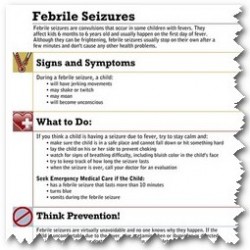Reflecting a variety of religious social and political forces laws and regulations permitting or restricting abortion have been enacted throughout the centuries and induced abortion has been a. Interviews with married women who reported having had an induced abortion.
 Self Managed Medication Abortion Expanding The Available Options For U S Abortion Care Guttmacher Institute
Self Managed Medication Abortion Expanding The Available Options For U S Abortion Care Guttmacher Institute
Induced abortion abortion brought on intentionally by medication or instrumentation.

Medically induced abortion. Also called an artificial or therapeutic abortion. Medication abortion also called the abortion pill is a safe and effective way to end an early pregnancy. Also called an artificial or therapeutic abortion.
A first-trimester abortion can be performed with surgery a procedure called suction curettage or by taking medication. To be effective the drug regimen should be adapted to gestational age. Abortion pill is the common name for using two different medicines to end a pregnancy.
It can take anywhere from about a day to 3-4 weeks from the time a woman takes the first medication until the medical abortion is completed. First you take a pill called mifepristone. The pregnancy is passed comes out through the vagina.
Medical management of abortion generally involves either a combination regimen of mifepristone and misoprostol or a misoprostol-only regimen. As physicians we are focused on protecting the health and lives of the patients for whom we provide care. Medical abortion became an alternative method of abortion with the availability of prostaglandin analogs in the 1970s and the antiprogestogen mifepristone also known as RU-486 in the 1980s.
How does the abortion pill work. Medical abortion involves taking 2 different medicines to end the pregnancy. Am J Obstet Gynecol.
Medical abortions are those induced by abortifacient pharmaceuticals. Medical abortion care encompasses the management of various clinical conditions including spontaneous and induced abortion both viable and non-viable pregnancies incomplete abortion and intrauterine fetal demise as well as post-abortion contraception. A intrauterine non-viable fetus is usually diagnosed by falling HCG levels or on ultrasound by an abnormal or empty sac a smaller-than-expected fetus or absence of a fetal heartbeat.
Without question abortion can be medically necessary. Exempting abortion from the test of medical necessity essentially relinquishes any claim that it is health care. For women with abnormal uterine anatomy that would make operative abortion.
Suction curettage is the most common type of abortion. Inevitable abortion a condition in which vaginal bleeding has been profuse membranes usually show gross rupturing the cervix has become dilated and abortion is almost certain. As opposed to a spontaneous abortion a miscarriage.
Sri Lanka 1988-1990. Finding or procedure Termination of pregnancy named variants Termination of pregnancy Termination of pregnancy procedure Pregnancy termination Abortion Induced Induced abortions Induced abortion Therapeutic abortion procedure procedure Termination of pregnancy fetus TOP Abortion induced NOS Medical. Medically induced abortion is the right option for her and which of the two drugs she should use.
The length of time depends. If an induced abortion is healthcare still a widely debated question then the procedure must meet the requirements of being medically necessary. In the US medical abortion accounts for 25 of abortions done at.
The pregnancy might spontaneously abort but some women might prefer not to wait and opt for an induced abortion. Pereta DC and Rajapaksa LC A community-based study on socio-demographic characteristics of women reporting an induced abortion Ceylon Journal of Medical Science 1991 34263-74. It can be done safely in a health care providers office or clinic.
A first-trimester abortion is one of the safest medical procedures. Medically induced abortion in a woman with a large myomatous uterus. 1Department of Obstetrics Gynecology and Reproductive Sciences University of Pittsburgh School of Medicine Magee-Womens Hospital Pennsylvania USA.
Induced abortion the intentional termination of pregnancy is among the most common of gynecological proceduresAnthropologists have found evidence of induced abortions in every known culture. Medical abortion is a safe and efficient abortion method up to 14 weeks LMP. The medicines are prescribed by the hospital or clinic and you usually take them 1 or 2 days apart.
There are situations where pregnancy termination in the form of an abortion is the only medical intervention that can preserve a patients health or save their life. Medical induction can be used for pregnancies of 11 weeks or 15 weeks. If patients have severe anemia medical induction should be done only in a hospital so that blood transfusion is readily available.
Most induced abortions are performed during the first trimester. How Long Do Medical Abortions Take. Abortion induced Medically induced abortion therapy Termination of pregnancy legal.
Women should be informed of advantages and disadvantages of the method according to the gestational age and side effects so. An abortion that is brought about intentionally.




